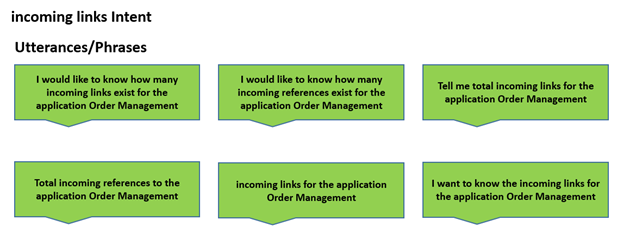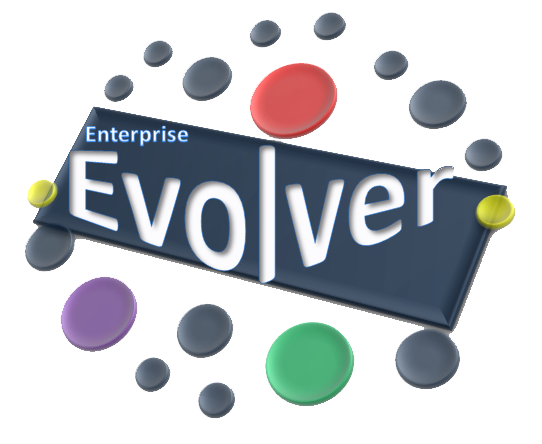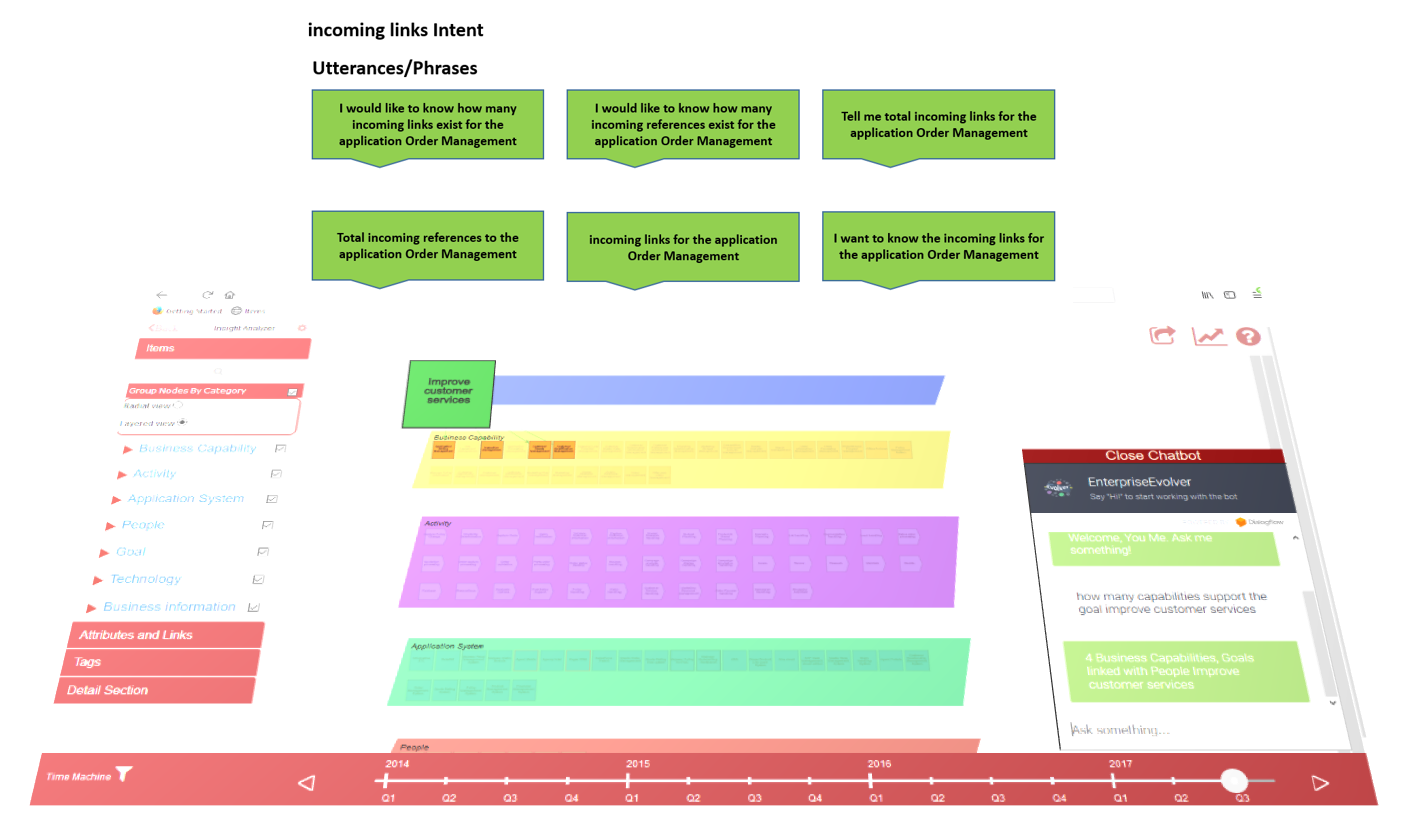In our previous release, we introduced an Artificial Intelligence (AI) Chatbot feature. A Chatbot is a software program that simulates human conversations, through AI’s Natural Language Processing (NLP) capability. Many times, an enterprise architecture graph or model represents a complex view of the reality of the enterprise or a stakeholder point of view. A graph can have answers to many of the questions that a user is interested in, for example, a user may like to know “how many applications” to “most prominent application system” or “how many applications support the capability customer management?” , There is no limit to find the answers from those graphs. The architecture maps provide complete traceability from goals to a capability, activity, application, technology and more. For example, the map below represents such a relationship among various parts of the business. Many times, a complex maps like below could be difficult to analyze by click and filter options available in the interface.
The way Enterprise Evolver’s Chatbot work is that it has pre-defined intents or goals and for each intent, there are phrases or utterances that invoke the intent. Since the Evolver Chatbot uses the Natural Language Processing (NLP), it can understand utterances or phrases which are similar in meaning. A user can ask the bot “how many incoming links exist for the application XYZ”. They can also ask simply “incoming links to the application XYZ”, the bot is intelligent enough to know exactly what the user is asking no matter how the user asks the question. Many times, we would like to know how many interfaces exist from one application to another , these kind of questions are addressed through the “incoming links” intent. This is depicted in the following example. 
The Bot has been trained with many commonly used intents, some of them are discussed further below:
- How many intent to answers to a user’s question like how many applications are in the graph
- Expired nodes intent to answers to a user’s questions like what applications are expired or will expire by October 2022.
- Relationship intent to answers to a user’s questions like what activities are enabling the business capability XYZ or what capabilities are supporting the value stream XYZ or what technologies are supporting the application system ZZZ and so on.
- Incoming and Outgoing links to answers to a user’s questions like how many relationships (incoming or outgoing) exist for a capability or an application. You can also just say “incoming links to the application XYZ” and the bot will know exactly you are asking the total incoming links/references on an application system.
- Critical Capability to answer to a user’s query about how many distinct or critical capabilities
- Exchange and flow to answer to a user’s questions about what information or value any exchange that is taking place between two nodes, for example, a user can ask what information flows between application ABC and XYZ.
- Centrality intent to answer to a user’s questions about a prominent node in a given graph.
- Owner intent to answer to a user’s questions about who owns an application system or any other object, and many more
Take your enterprise architecture program to the next level by introducing an intelligent Chatbot capability and provide a better user experience to your stakeholders.
Watch the bot in action.
To subscribe click here.







